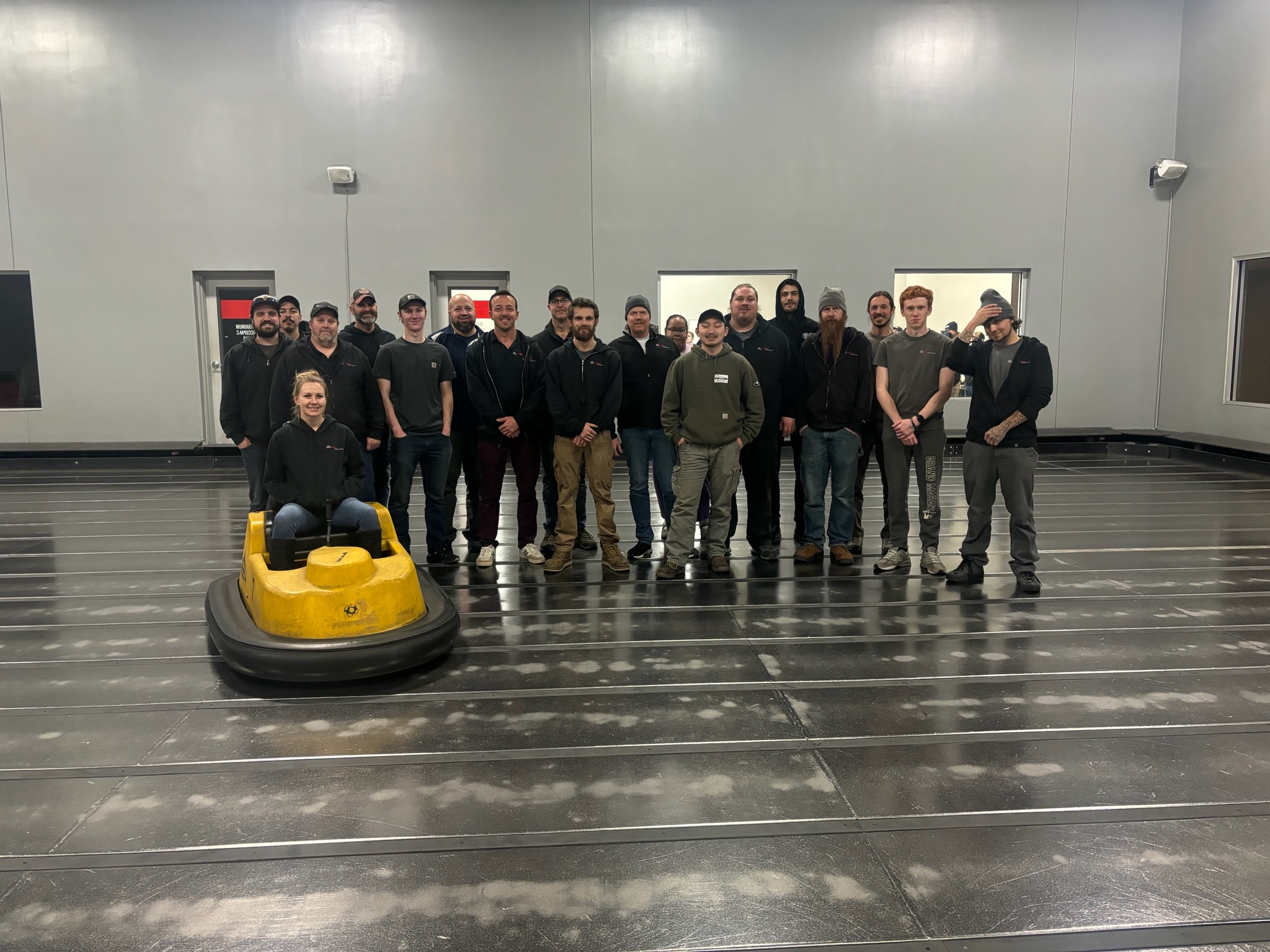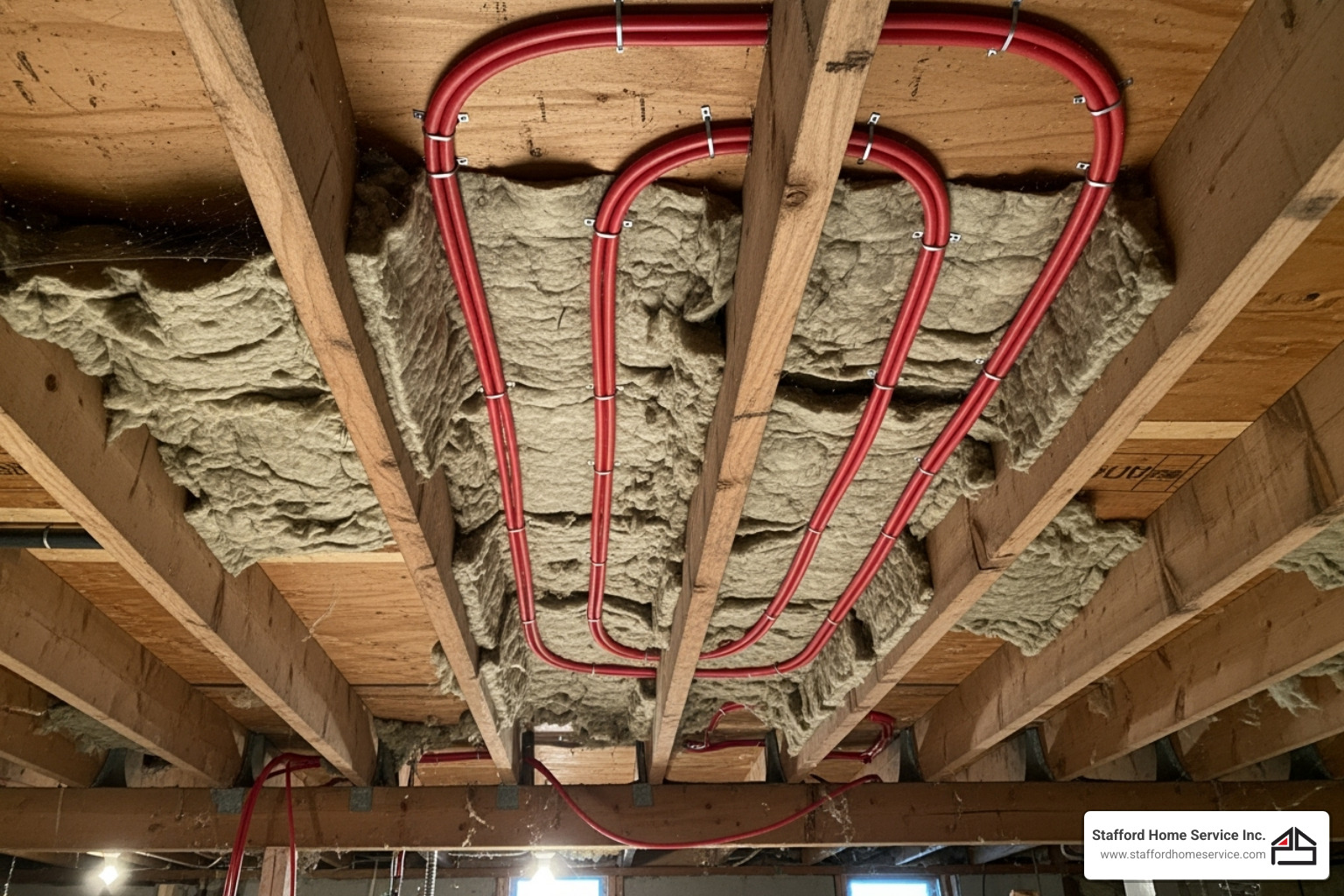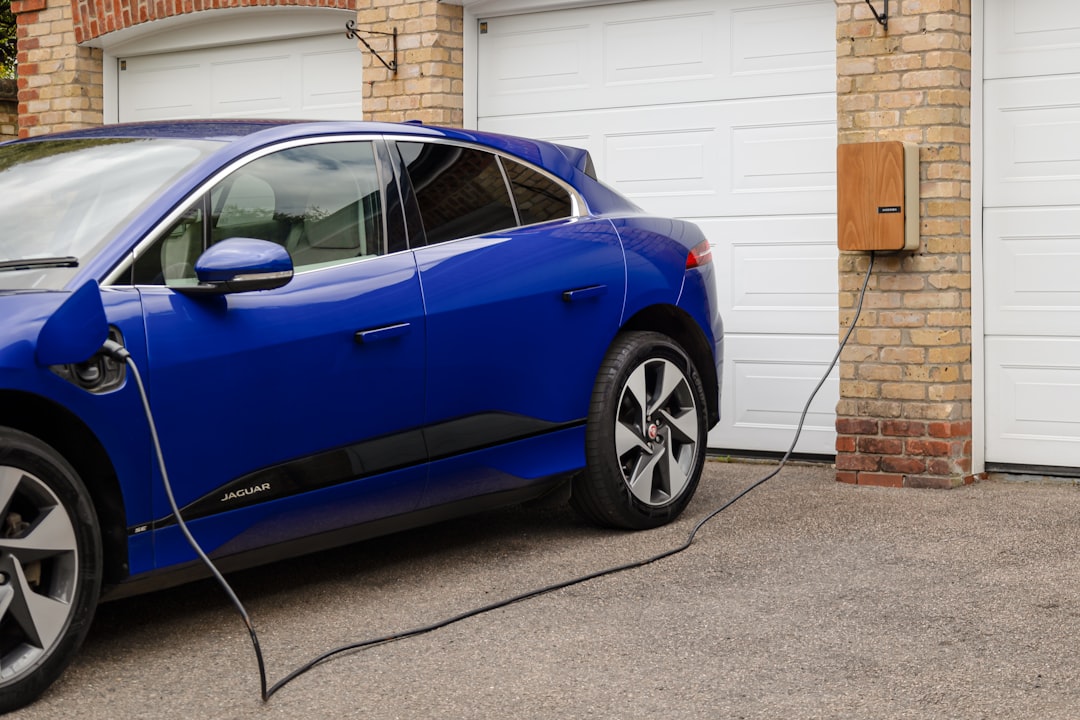Hydronic Harmony: Retrofitting Radiant Heating in Your Century Home
Why Retrofitting Radiant Heat Transforms Century Homes
How to install radiant floor heating in existing house depends on whether you choose electric or hydronic systems and the access you have to your subfloor. Here's the quick answer:
Two Main Retrofit Methods:
From Below (Staple-Up Method) - Access floor joists from basement or crawlspace, install PEX tubing or electric elements between joists with aluminum transfer plates, add insulation, and connect to heat source. Best when you want to preserve existing floors.
From Above (Overpour/Panel Method) - Remove existing flooring, lay electric mats or low-profile hydronic panels on subfloor, cover with self-leveling compound or thinset, and install new flooring. Adds 0.5-1.25 inches to floor height.
Both methods require professional electrical or plumbing connections for safety and code compliance.
If you live in a century home with radiators or forced-air heat, you've probably experienced the frustration of cold floors on winter mornings. Your beautiful historic house might have charm, but it wasn't built for modern comfort. Radiant floor heating solves this by warming your floors directly, creating consistent heat that rises naturally through your rooms without noisy vents or dusty air circulation.
For homeowners exploring pros and cons of in-floor heating, the retrofit process is more accessible than you might think. Whether you're renovating a bathroom or upgrading your entire heating system, modern installation methods work with your existing structure. Contact Stafford Home Service Inc. to discuss which approach fits your home best.
The beauty of retrofitting radiant heat is that you can often install it without major demolition. If you have basement or crawlspace access, the "staple-up" method preserves your existing floors entirely. If you're already replacing flooring, the "overpour" method integrates seamlessly into your renovation. Both deliver the same result: warm, comfortable floors that reduce your energy bills and eliminate cold spots.
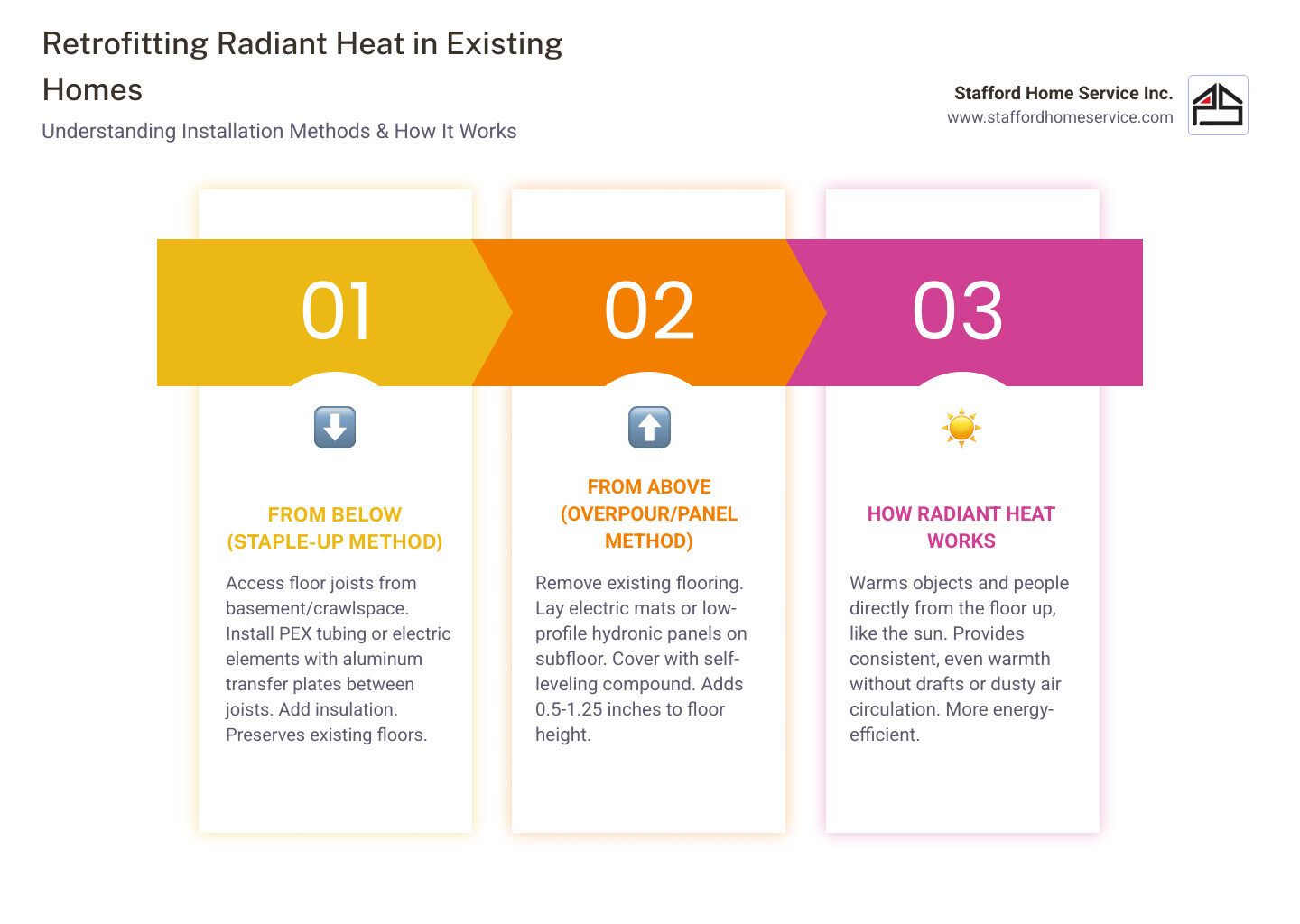
Understanding Your Radiant Heating Options
Before you decide how to install radiant floor heating in existing house, you'll need to choose between two main types: electric and hydronic. Unlike forced-air furnaces that blow hot, dusty air, radiant systems warm the floor itself. This heat radiates upward, warming objects and people directly for a consistent, comfortable warmth similar to sunshine. This method is highly efficient, eliminating heat loss from ductwork and improving air quality by not circulating dust and allergens. Many homeowners save on energy by setting their thermostats lower while feeling just as warm. When weighing the pros and cons of in-floor heating, the choice between electric and hydronic often depends on your project's size and your home's infrastructure.
| Feature | Electric Radiant Heating | Hydronic Radiant Heating |
|---|---|---|
| Installation | Easier, less invasive | More complex, typically professional |
| Best Use Cases | Single rooms, smaller zones (bathrooms, kitchens) | Whole-house heating, larger areas |
| Heat-Up Time | Faster (30-60 minutes) | Slower (up to 2 hours), but holds heat longer |
| Operating Cost | Higher per kilowatt-hour, best for supplemental heat | Lower per BTU, efficient for primary heating |
| Components | Heating wires/mats, thermostat, electrical connection | PEX tubing, boiler/water heater, manifold, pump, thermostat |
| Floor Height Impact | Minimal (1/8" - 1/4" for mats) | Can add 0.5" - 1.75" depending on method |
| Energy Source | Electricity | Natural gas, propane, oil, solar, wood, electricity |
Electric Radiant Floor Heating
Electric systems use thin heating cables in mats or as loose wires beneath your floor. They are ideal for smaller spaces like bathrooms, kitchens, and mudrooms, where they provide supplemental heat. The mats are very thin, so they barely affect floor height. While installing the mats can be a DIY-friendly task, all electrical connections must be handled by a licensed electrician for safety and code compliance. Our Electrical Radiant Floor Heating service handles the complete installation. The main consideration is operating cost, as electricity can be more expensive than other fuels, making these systems best for smaller zones.
Hydronic Radiant Floor Heating
Hydronic systems circulate hot water through flexible PEX tubing under your floors. A boiler or water heater provides the hot water. These systems are the top choice for whole-house heating or large areas due to their high energy efficiency. While they take longer to heat up, they retain warmth for incredibly stable comfort. Hydronic systems also offer fuel flexibility, running on natural gas, propane, oil, or even solar. The installation is more complex, involving plumbing, manifolds, and pumps, so it almost always requires professional expertise. However, the long-term energy savings make it a worthwhile investment for larger projects.
How to Install Radiant Floor Heating in an Existing House
Retrofitting radiant heat into an existing home requires choosing an installation method that minimizes disruption while maximizing warmth. The main question for how to install radiant floor heating in existing house is whether to work from below the floors or on top of the subfloor. While some steps are DIY-friendly, critical electrical and plumbing connections always require a professional to ensure safety and code compliance.
Installation From Below (The "Staple-Up" Method)
The "staple-up" method is ideal for homes with an unfinished basement or accessible crawl space, as it allows the installation of hydronic PEX tubing or electric heating cables from underneath. This preserves your existing flooring completely.

The process involves fastening aluminum transfer plates to the underside of the subfloor between the joists. These plates are crucial for drawing heat from the tubing and spreading it evenly. The PEX tubing is then snapped into the plates. Finally, insulation is added below the system to direct all the warmth upward into your living space, not down into the basement. This non-invasive method is perfect for preserving the historic charm of your home.
Installation From Above (The "Overpour" or Panel Method)
If you can't access the floors from below or are already replacing flooring, installation from above is the perfect solution. This involves laying heating elements on the existing subfloor after the old flooring is removed.
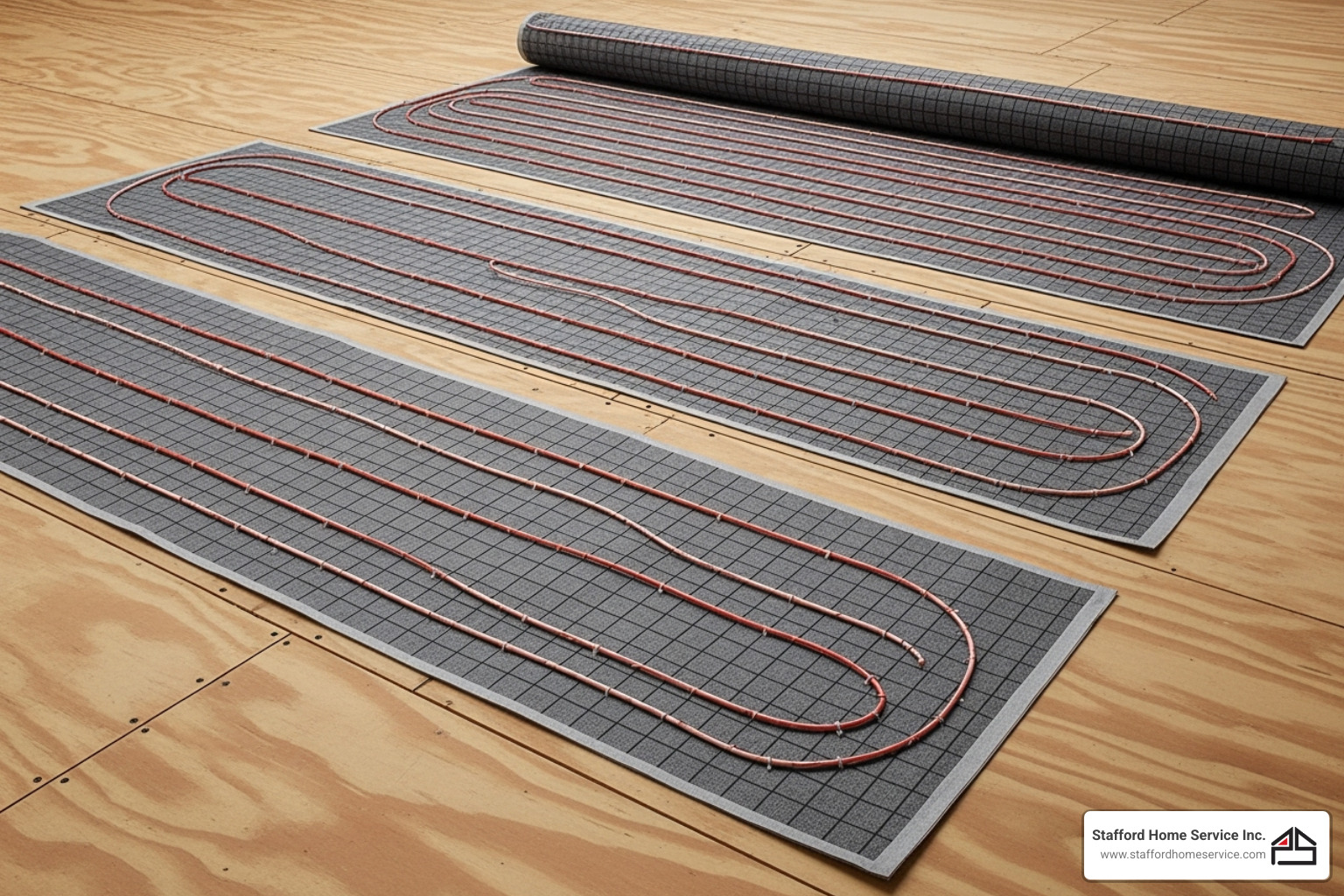
For electric systems, thin heating mats are rolled out and covered with thinset mortar or a self-leveling compound. For hydronic systems, specialized low-profile panels with pre-formed grooves hold the PEX tubing. These are then covered with a thin layer of lightweight concrete. While this method raises the floor height slightly (often less than 1¾ inches), it's a manageable adjustment. The "overpour" method is ideal for bathroom or kitchen renovations.
Step-by-Step Retrofit Installation Guides
Before starting, safety is paramount. Always follow manufacturer guidelines and local building codes. While some physical installation can be a DIY task, all electrical and plumbing connections require a licensed professional. It's not worth the risk to do otherwise. Proper subfloor preparation—cleaning, leveling, and making repairs—is essential. Finally, always test the system before covering it up. For electric systems, check resistance with a multimeter; for hydronic, perform a pressure test to find leaks. These steps prevent major headaches later.
A Guide on How to Install Radiant Floor Heating in an Existing House with an Electric System
Electric systems are a popular choice for single-room projects like bathrooms and kitchens. The general process is as follows:
- Plan the Layout: Measure the room and map out where the heating mat or cables will go, avoiding permanent fixtures like vanities or toilets.
- Prepare the Subfloor: Ensure the surface is clean, dry, and level. Add insulation board over concrete slabs or unheated spaces to improve efficiency.
- Test and Secure the System: Test the heating mat with a multimeter to confirm it's not damaged. Then, secure the mat or cables to the subfloor according to your plan.
- Install the Sensor: Place the thermostat's floor sensor between two heating elements and run its wire back to the electrical box.
- Professional Electrical Connection: A licensed electrician must connect the system to a dedicated, GFCI-protected circuit and install the thermostat.
- Encapsulate and Finish: Cover the heating elements with thinset mortar or self-leveling compound. Once cured, install your new flooring.
A Guide on How to Install Radiant Floor Heating in an Existing House with a Hydronic System
Hydronic systems are more complex and best for larger areas. For a staple-up installation from below, the steps are:
- Access Joist Bays: From a basement or crawlspace, clear the space between floor joists under the area to be heated.
- Install Transfer Plates: Fasten aluminum transfer plates to the underside of the subfloor. These are critical for distributing heat evenly.
- Run PEX Tubing: Drill holes through joists as needed and snake the PEX tubing, snapping it into the grooves of the transfer plates.
- Add Insulation: Install high-R-value insulation directly beneath the plates and tubing to force heat upward.
- Connect to Manifold: Route the ends of the PEX loops to a central manifold, which acts as the distribution hub.
- Pressure Test and Professional Connection: After a successful pressure test to check for leaks, a licensed plumber or HVAC technician must connect the manifold and pump to your boiler or water heater.
Key Considerations for Retrofitting in an Existing House
Retrofitting radiant heat in an older home requires careful planning. Key considerations include potential changes to floor height, especially with "overpour" methods that can add 0.5 to 1.75 inches, affecting doors and transitions. Your home's structure must also support any added weight, particularly from concrete overlays in hydronic systems. While some installation steps are DIY-friendly, the technical connections are not. For a project like how to install radiant floor heating in existing house, hiring professionals for electrical and plumbing work ensures safety, reliability, and peace of mind.
Electrical and Plumbing Requirements
Both system types have specific utility requirements that must be handled by professionals. Electric systems typically need a dedicated electrical circuit with GFCI protection for each zone, and your home's electrical panel must have sufficient capacity. Hydronic systems require integration with a boiler or water heater. A licensed professional will install the manifold to distribute water, a circulator pump to move it, and mixing valves to regulate the temperature, protecting your floors.
Flooring Compatibility and Best Rooms for Radiant Heat
Most flooring materials work with radiant heat, but some are better than others at conducting warmth.
- Excellent Choices: Tile and stone are the best for heat transfer and retention.
- Great Choices: Engineered wood is more stable than solid hardwood. Laminate and many modern vinyl products are also compatible (always check manufacturer specs).
- Use with Caution: Carpet can act as an insulator, reducing efficiency. If used, choose a low-pile carpet and a dense pad with a combined R-value below R-2.5.
Radiant heat provides exceptional comfort in several key areas:
- Bathrooms: The most popular choice, turning cold tile into a warm, spa-like surface.
- Kitchens: Makes standing on hard floors more comfortable.
- Basements: Transforms a cold, damp space into an inviting living area.
- Bedrooms: Provides silent, even heat without circulating dust.
- Sunrooms & Home Offices: Delivers consistent warmth to make these spaces comfortable year-round.
Frequently Asked Questions about Retrofitting Radiant Heat
We understand you likely have many questions about bringing the cozy warmth of radiant heat into your existing home. It’s a big step, and we're here to help clarify things! Here are some of the most common inquiries we receive from homeowners like you:
Can radiant heat be installed under my existing wood floors?
Yes, absolutely! If you’re wondering how to install radiant floor heating in existing house without removing your floors, the "staple-up" method is the solution. If you have an accessible basement or crawl space, our team can install the heating system between the floor joists from below. We use aluminum transfer plates for even heat distribution and add insulation to direct the warmth upward. This preserves your beautiful wood floors while making them comfortably warm.
How does radiant floor heating improve home comfort and efficiency?
Radiant heat improves comfort by warming the floor and objects in a room directly, creating an even, consistent warmth from the ground up. This eliminates the drafts and cold spots common with forced-air systems. It's more efficient because there's no energy wasted through leaky ductwork. This allows you to feel comfortable at a lower thermostat setting, leading to significant energy savings. It also improves indoor air quality by not circulating dust and allergens.
Is installing radiant floor heating a DIY project?
While handy homeowners can often perform some tasks like laying electric mats or PEX tubing, this is not a full DIY project. All electrical and plumbing connections must be handled by a licensed professional. This is critical for safety, meeting local building codes, and ensuring your system functions correctly. Our experienced technicians handle these complex connections to guarantee your system is installed perfectly and safely.
Experience Best Comfort in Your Home
Imagine stepping out of bed onto a floor that’s already pleasantly warm. That's the reality of radiant floor heating—a new level of comfort that transforms your home into a cozy sanctuary year-round. By warming objects directly, it provides consistent heat without drafts or noisy vents, improving air quality and energy efficiency. This smart upgrade can also increase your home's value.
At Stafford Home Service Inc., we specialize in bringing this modern luxury to your home. Our team prides itself on quality workmanship and complete customer satisfaction. We understand the unique needs of older homes and are experts in how to install radiant floor heating in existing house with minimal disruption. Serving Minneapolis, St. Paul, and the surrounding areas, we're ready to guide you through the process.
Ready to say goodbye to cold floors forever? Contact us for your Electrical Radiant Floor Heating needs or to explore hydronic options. Let us help you find the perfect solution to bring warmth and comfort to your home.
Customer Testimonials
Our customers consistently praise our knowledgeable technicians, prompt service, and the lasting quality of the work we deliver.
ABOUT STAFFORD HOME SERVICE
In 2007, long-time team members Kris Thompson and Dan Fournier took ownership of Stafford Home Service. With over 60 years of combined expertise in residential electrical and HVAC, they continue the legacy of former owners Curt Cervin and Paul Stafford—delivering quality workmanship and complete customer satisfaction.
70+ Years
Family-operated experience delivering trusted electrical, heating, and cooling services.
800+
Verified 5-star reviews from satisfied customers.
